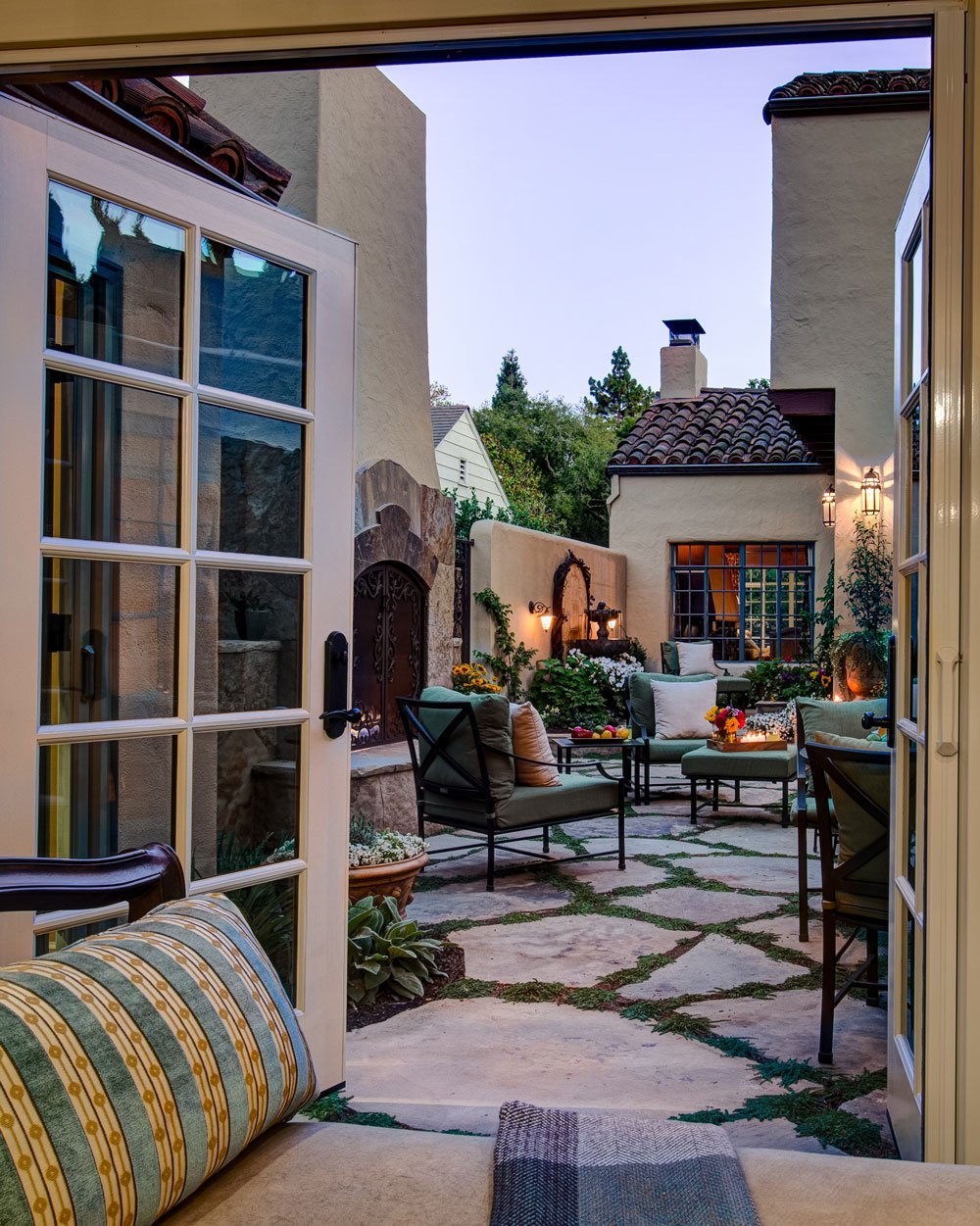Biophilic Design Brings the Beauty of Nature Indoors
People are innately drawn to form connections with nature. We seek natural surroundings and green spaces to help us relax and unwind. A large body of research has proven that being exposed to elements of, or viewing scenes of nature has a profoundly positive impact on our physical and emotional well-being. Nature offers a host of benefits for children and adults, including reducing stress, lowering blood pressure and heart rates, increasing immunity, and elevating our mood.
From this extensive research a trend called biophilic design has emerged. “Biophilic design is all about bringing the outdoors in,” says Harrell Design + Build Designer, Divya Vijayanandakumar, LEED AP ID+C, UDCP. “It is founded on scientific evidence and fused with aesthetics that draw upon our need to have a connection with nature and how that relationship benefits our health.”
Initially applied in commercial spaces such as offices (check out Amazon’s Seattle biosphere workspace) and health care, biophilic design has now entered the residential realm.
“Achieving indoor-outdoor flow has been a highly desirable trend for many homeowners,” Divya shares.
To make the most of these biophilic benefits, Divya recommends enlisting an experienced professional. “A designer will create a cohesive aesthetic that fits the homeowner’s unique lifestyle while properly applying natural elements.” Not all materials lend themselves to all uses and purposes. For example, certain natural stone is too porous for kitchen counters, while others are too slick for flooring.
Biophilic design incorporates various natural elements into our indoor spaces, encourages positive personal responses, and creates a direct connection with nature. These include:
- Views of nature
- Light and space
- Airflow and air quality
- Organic materials and textures
- Colors and hues found in nature
- Non-linear, curving shapes
- Greenery

Views of Nature
Seeing panoramic landscapes, ocean or mountain views, or even a view into our front and backyards are essential biophilic tenets. Large picture windows that look onto attractive green spaces are soothing and invite nature in. Photographs, artwork, and wallpaper are other ways to introduce natural settings and scenery.
Light and Space
There is nothing quite like natural light to illuminate a home. Skylights, plentiful windows, and expansive glass doors imbue a home with this important component of nature. High ceilings and spacious, open floor plans and furniture placement provide an airiness to a home’s spaces.
Air Flow and Quality
Cross ventilation achieved from windows and door allows natural, fresh air to flow throughout a home. HVAC units provide high-quality air when natural ventilation isn’t possible. Houseplants also play a role, removing carbon monoxide, nitrogen oxides, and other airborne toxins, including VOCs.
Organic Materials and Textures
Wood, natural stone, materials, and fabrics such as sisal, jute, bamboo, wicker, cotton, and silk can be included in numerous ways. Wood is one of the most versatile materials, with both structural and aesthetic applications. The texture, aroma, and warmth of wood, along with its myriad of uses, make it an ideal finish for use in biophilic design. Beam ceilings, reclaimed wood accent walls, hardwood floors, live-edge shelves, wooden furnishings, and cabinetry are just a few of the ways in which wood can bring the beauty of nature into a home. Sisal and jute are highly textural materials often used in area rugs. Cotton, birch, silk, and bamboo are luxurious for bedding, bath towels, draperies and pillows. Wicker accessories and furniture lend yet another layer of textural appeal to a space. Unique and varying textures add another distinctive aesthetic element to this environmentally-based design.
Colors & Hues of Nature
Consider a sunrise or sunset. The array and depth of colors are astounding. “Just about every color can be found in nature, but some are more common and soothing,” shares Divya. “Selecting the appropriate tonality and hue to achieve the desired mood for the space is important. Nature offers an incredible collection of colors from which a homeowner can choose, ensuring their unique style shines through.”
Non-Linear, Curving Shapes
Straight lines aren’t found as frequently in nature as they are in human-made environments. Integration of flowing, non-linear shapes soften a space, figuratively “taking the edge off” and making it more pleasing and comfortable. Round, curving, and otherwise organic shapes can be incorporated in artwork, furnishings, wallpaper, and door hardware.

Greenery
In all that research we mentioned it has also been shown that living, green plants in a home improve concentration and productivity along with elevating mood and reducing stress. According to a NASA study, they also help remove up to 87% of airborne toxins. Lush and verdant, colorful and textural, plants merge so many biophilic bonuses. Place them throughout your home, including your bedroom and home office, to reap the rewards. “There are houseplants that thrive best in different indoor environments, so be sure to ask an expert for advice,” Divya advises. A living wall can create an incredible focal point, especially in a two-story entryway. A living roof, though not inside, is another way to embrace biophilia.
Each room in a home is a canvas for biophilic design. For example, a bathroom can include a raised or flat pebble shower floor, a teak shower bench, natural stone countertops, plants that flourish in high-humidity, and luxurious organic cotton towels. A kitchen might have gleaming French doors overlooking an abundant backyard landscape, a small countertop herb garden, rich hardwood floors, a butcher block island, and marble counters.
Are you intrigued by the idea of biophilic design? Discover how this aesthetic based in science can beautify your home and benefit your health by connecting with one of Harrell Design + Build’s award-winning designers.
Woman Founded and 100% Employee-Owned, Harrell Design + Build has created distinctive homes in Silicon Valley and on the mid-Peninsula since 1985. Our Design + Build Team is here to help you reimagine your home inside and out.





